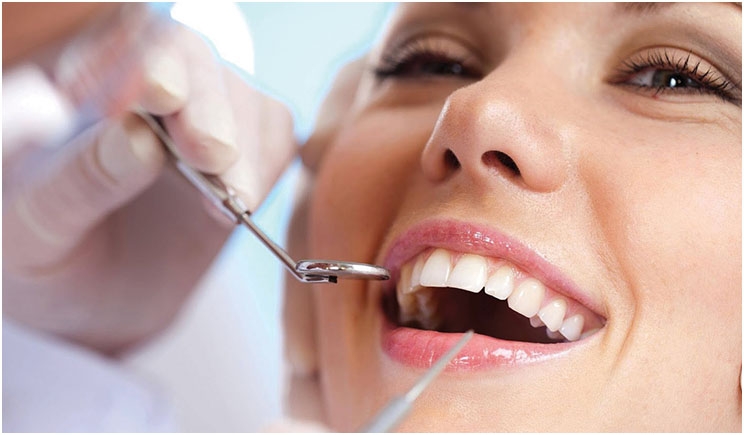
“Hey, I just heard the code for silver diamine treatment is a per tooth code.”
“The prophy code is 1110.”
“No, it isn’t. It’s D1110.”
“That’s what our computer says.”
A practice management software trainer recently overheard this problematic conversation. It’s a problem because it is a symptom of not-updating-itis.
Okay, that’s a made up word. But dental practices all over the country could be losing money by not coding accurately because the codes in their practice management software haven’t been updated. This can be costing these practices money as well as creating a risk for fraud.
CDT Updated Every Year
Since 2012, the CDT Code has been updated every year. Practices are obligated to use the code that most accurately describes the treatment provided. That code must be from the CDT Code version currently in effect on the date of service.
Here at year-end, one of the many ways your practice needs to prepare for the next year is to update the CDT Code in your practice management software.
Using an old code is like using an expired cartridge of anesthetic. These updates must be made in your practice management software. As part of your service contract, your vendors offer these important updates. Make sure you take advantage of them!
Accurate Codes Required
Federal regulations and legislation arising from the Health Insurance Portability and Accountability Act (HIPAA) named the CDT Code the HIPAA standard code set for dentistry.
One purpose of the CDT Code is to ensure the efficient processing of dental claims. But it also is used to populate an electronic health record. That means even if your practice does nothing with third party reimbursement, it is still required to use accurate codes in its practice management system documentation.
Made Up Codes Can’t Be Submitted
Many dental professionals only see CDT codes in their software. They never look at the CDT Code book, so they have no actual knowledge of the codes.
Unfortunately, because there are gaps in the codes, some practices will make up a code so they can complete insurance claim forms or keep track of procedures like blood pressure screening that have no code.
The problem is that third party carriers can only recognize approved CDT codes, and the claim will be automatically rejected. This also puts the practice at risk of being charged with insurance fraud.
A greater problem is when a practice chooses to change the name of the code, such as changing the name of the new code, D4346. The name appears in CDT 2019 as scaling in presence of generalized moderate or severe gingival inflammation – full mouth, after oral evaluation. If a practice chooses to change its name to gingivitis treatment, it would be inaccurate for submission.
Changing the name also leads the practice to an incorrect understanding of the code’s requirements. The last part of the name, after oral evaluation, is a game-changer for most practices.
It has long been the tradition for the dentist to perform an evaluation after hygiene care is complete. This code name specifically states that the evaluation must come before treatment. It is not the scope of this article to explain this further, but more details can be found in A Gingivitis Code Finally!
Update from Vendor Not All That is Needed
Vendors send a notification when your update is available. If you did not get it, the best option is to contact your vendor for the additions.
Another challenge is when the updates from the vendor do not make the changes needed for revised codes. As mentioned in the opening, the code D1354 interim caries arresting medicament application – per tooth can be used for application of silver diamine fluoride, but it was changed in CDT 2018 to add the words – per tooth. This change will not be automatic with an update.
Each CDT code consists of an alphanumeric character beginning with the letter “D” (the procedure code) and a title (the nomenclature). This D designates that it is a dental code. Some software vendors drop the D. This leads us to think the code in the example above is 1110 instead of D1110.
This is not just an unimportant detail. As dentistry and medical continue to unify, the D for a dental code is important.
Annual CDT Training
Creating codes to embrace new technologies, materials, and procedures can lead to earlier arrest and prevention of oral disease and positively influence systemic health. To adapt to a fast-moving world, CDT is now updated every year.
Dental practice training and retraining are also required. We recognize needed training for annual OSHA/infection control training and CPR/BLS certification. When new technology is purchased, training is generally expected.
Yet one area lacking initial and followup training is coding for the entire dental office team. Practice profitability can be increased with up-to-date coding knowledge. A minimum of one or two office meetings each year should be reserved for coding updates and training.
Not-updating-itis isn’t terminal. You can easily fix it.
Ms. DiGangi believes dentistry is no longer just about fixing teeth. Dentistry is oral medicine. Her work helps dental professionals embrace the opportunities and understand the metrics that accurate insurance coding provides. The ADA recognized her expertise by inviting her to write a chapter in its CDT 2017 Companion book and again for its CDT 2018 Companion. She is the author of the DentalCodeology series of easy-to-read bite-size books. Her latest book, Teledenstistry: Pathway to Pathology, was cowritten with Cindy Purdy, RDH, BS. She can be reached at patti@dentalcodeology.com.
Related Articles
HbA1c In-Office Testing Code Increases Oral-Systemic Opportunities
D4346 Coding or Training Issues?











